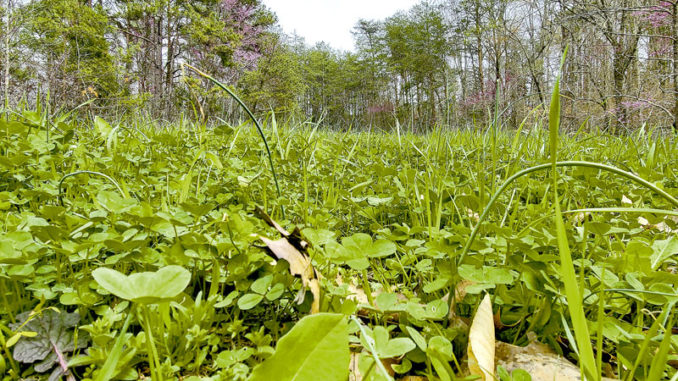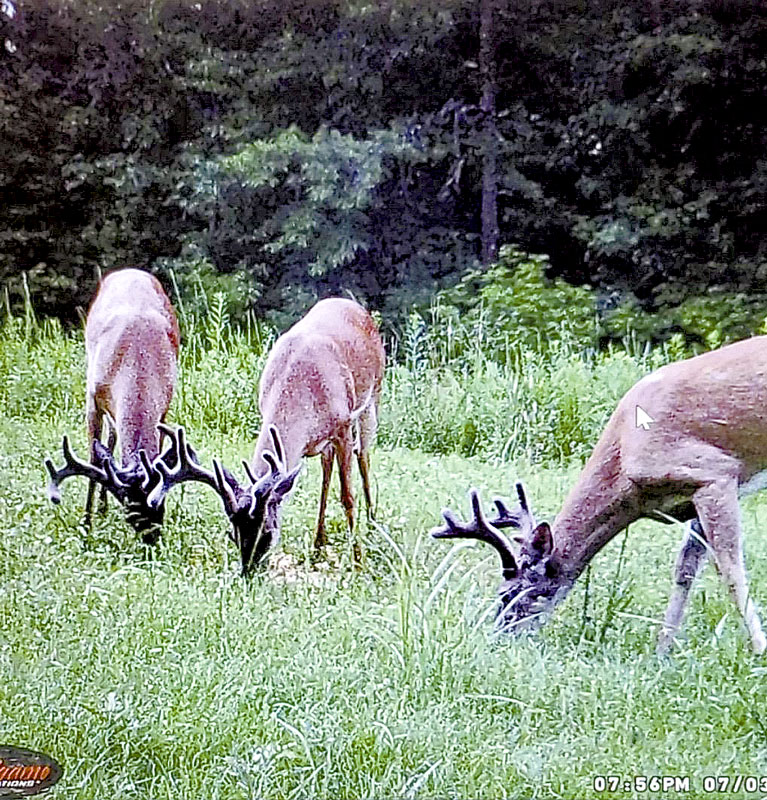
When fall food plots go in the ground is a concern
Fall is approaching, regardless of how the 90-degree days continue to pile up in the Carolinas. And planting season is here for land managers looking to get a cool-season crop in the ground.
A lot can go into planting a successful food plot. And environmental conditions when the seeds are planted can be a deciding factor.
Food plots provide wildlife with a supplemental food source, and they can double as a hot spot during the hunting season. If executed correctly, food plots can be a solid source of nutrition and a true benefit for wildlife and landowners.
The creation of food plots is basic farming, but on a much smaller scale and usually without the aid of a farm production company monitoring the crop every step of the way. If conditions are optimal, remain consistent and the stars align exactly right, a lush, green food plot can be achieved that has all the deer, turkeys and other game birds and animals standing in line.
But Mother Nature does not always make it easy. Drought, flooding, sweltering temperatures, freezes and a wide range of conditions can make growing a successful crop difficult. Sometimes, things seem to work out, but she presents challenges that must be dealt with.
Nature’s control
Landowners must remember a few basic principals. For starters, weather cannot be controlled. Rain, drought and temperature swings are going to come and go, especially during the fall, when seasons are in transition.
Landowners should take command of what they can control. Acid-base correction, soil amendments, seed choices and planting dynamics can be championed successfully. And planning the ideal time to plant is also under the control of the landowner. Choosing the right environmental conditions to plant for the fall season is a critical move to getting plants started off on the right foot.
Conditions for planting should be chosen wisely to produce a successful crop. Seeds are hearty and can withstand a long period between harvesting and planting. Most planting seeds are generally stored for up to a year after being collected. Until they are given the opportunity to germinate, these seeds will remain dormant and can withstand all kinds of environmental pressure. But as soon as the seeds are covered with soil and subjected to heat and moisture, the fragility factor rises through the roof.
The days immediately after germination, when the tender shoots exit the seed capsule, are a critical time. However, the new shoots are generally fairly safe while under the protection of the soil layer, as long as rain does not drown them. When they breach the soil barrier, new plants see the sun’s rays for the first time, and the photoreceptors begin transforming the sun’s energy into green flesh.
Soil moisture is important for fall food plots
During this period, moisture levels in the soil are critical to fuel respiration and to protect the microscopic roots from drying out. Too much moisture, and the juvenile plants will drown. Too little moisture, and the plants will dry out and die.
However, some plants are more tolerant of higher or lower moisture levels than others. And the site’s soils can help retain or shed water when needed. It is basic geometry.
Sandy soils are made up of large angled particles, with space left between them when close together. In most coarse sands, water passes through the soils fairly quickly. Fine sands can slow water percolation but usually will not stop it.
Clay and silt are very small and made up of flat particles; they can also be sticky. When packed together, clays and silts will prevent water from percolating through. Most soils aren’t pure sand, silt or clays; they are typically loams — a fancy word for a mixture of soil particles. So, the more clay a mixture contains, the slower the percolation rate and the higher the water-retention rate. Soils that are mostly sand will not retain water as easily, and they can dry out faster.
Soil moisture must be retained enough to keep the root systems moist, but not eliminating air and respiration.
Plant fall food plots around rain events
Choosing the right weather conditions to plant is the name of the game. The rate of water retention in a soil type will determine the best time to plant. Early in the growth process, light to moderate rain events are preferred over heavy, drenching rains. The heavy rains can erode soil around new plants, exposing roots and flooding out plots in low lying areas.
Knowing when to plant is always going to be site-specific, but as a general rule, planting just before a light to moderate rain is preferred. In sandy soils, sites should be planted just after a light rain event and just before another light rain event on the horizon. In loamy to clay soils, where excessive standing water can result from moderate rain events, these areas should be avoided for planting when any heavy, flooding rains are in the immediate forecast.
While the weatherman isn’t always accurate, the way to get a food plot started off on the right foot is to choose the best time to plant. And watching the weather may be the only way to predict when it’s the best time to get seeds set.

Match seed to plot type
Site selection is important for creating awesome food plots that attract deer, turkey and other wildlife species. Some sites will create better opportunities for some seeds over others. Size and location make a huge impact on the success and longevity of a plot.
Seed selection should be carefully determined based on the size of the plot, location of the plot, soil characteristics and, of course, budget. Landowners shouldn’t always choose the plot seed that has the best pedigree, because it may not work for the site.
Two of the best and most-liked fall foods are soybeans and peas. But if a landowner plants a crop of legumes on a one-acre site deep in the woods, the deer will mow them down as soon as they emerge from the soil. Sure, one could erect a protection fence during the early growth period, but as soon as the fence comes down, a small plot of soybeans and peas will quickly be eaten. To a small degree, soybeans and peas will regenerate from browsing early in the growing process, but overall, they aren’t very resilient to heavy browsing. They are wonderful deer foods, but they need to be planted in larger areas in order to provide season-long forage.
Small plots in deer-rich areas need a crop that can regenerate fast from heavy browsing. Landowners should choose plants like oats, rye, triticale and clovers for smaller plots. These plants, which regenerate quickly, can be planted more economically and will provide the season-long forage production that was intended.




Be the first to comment